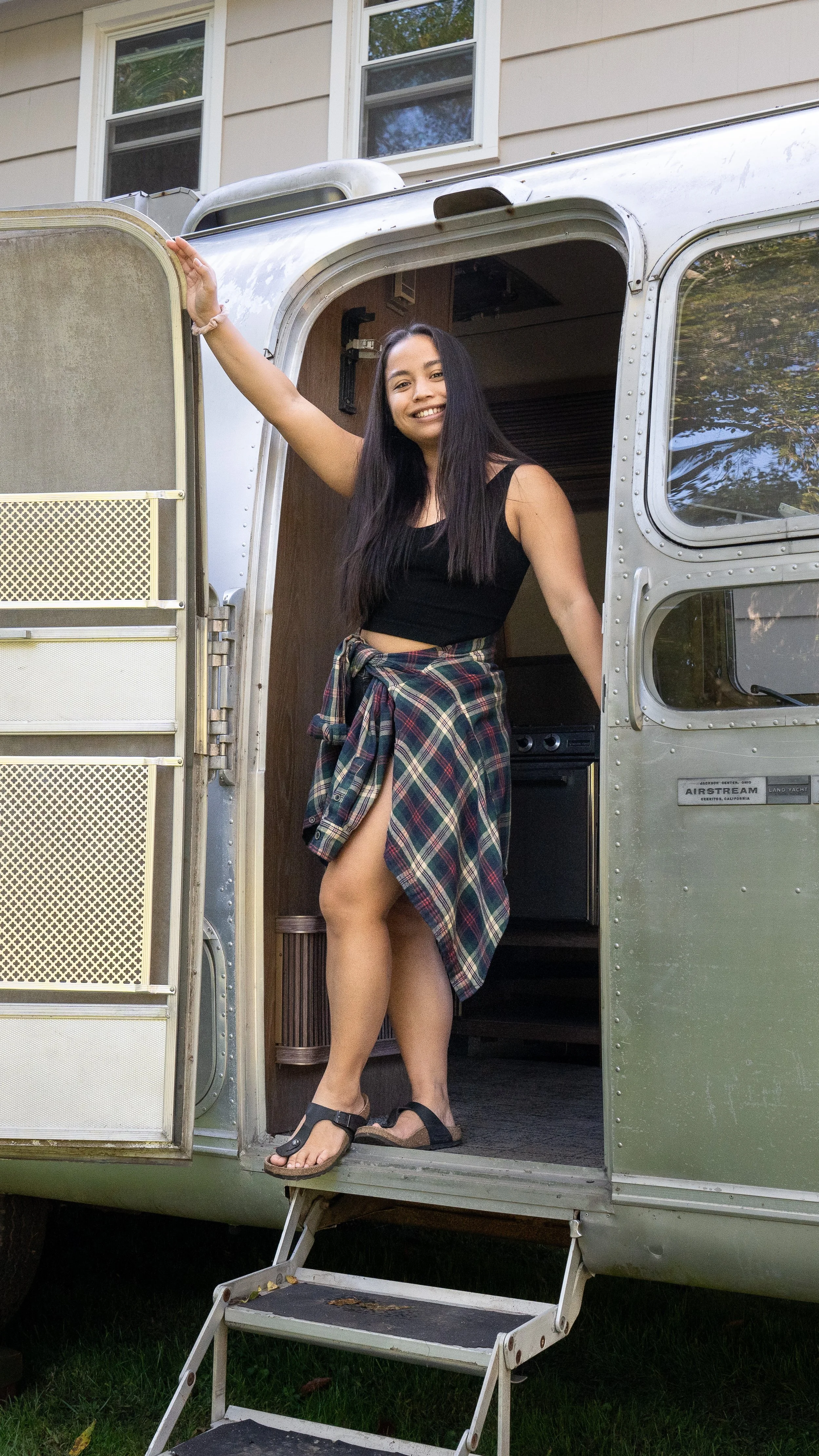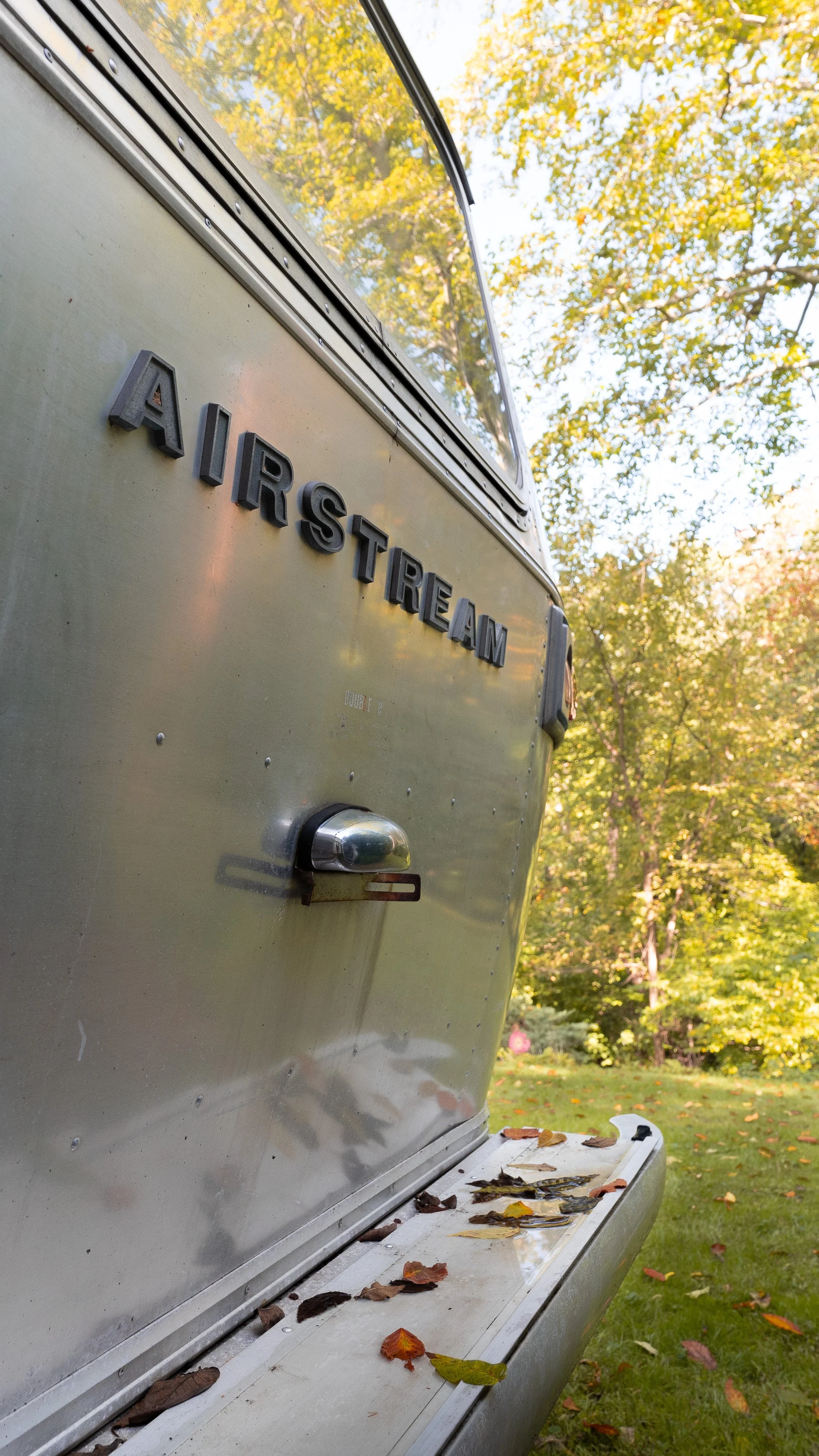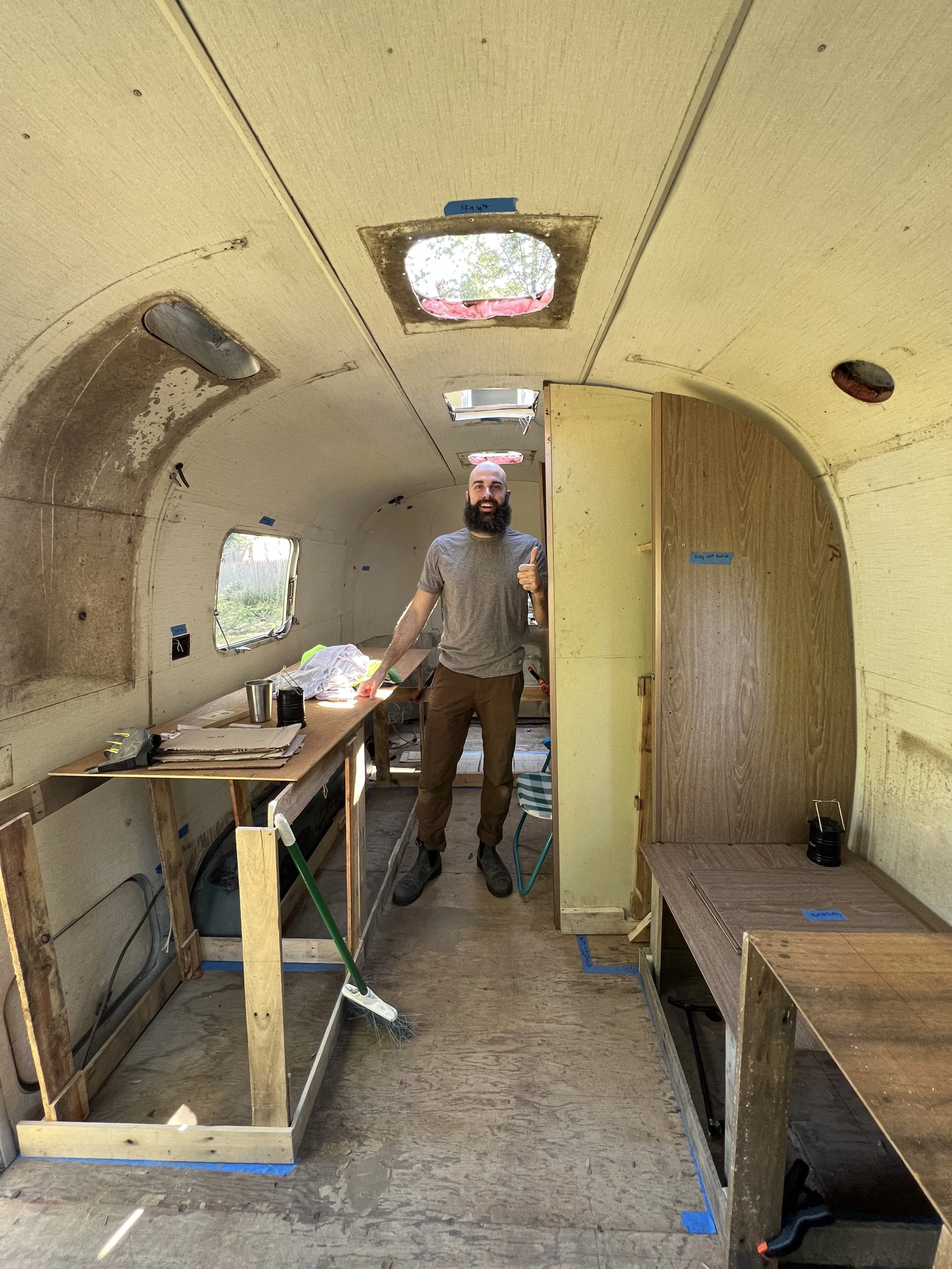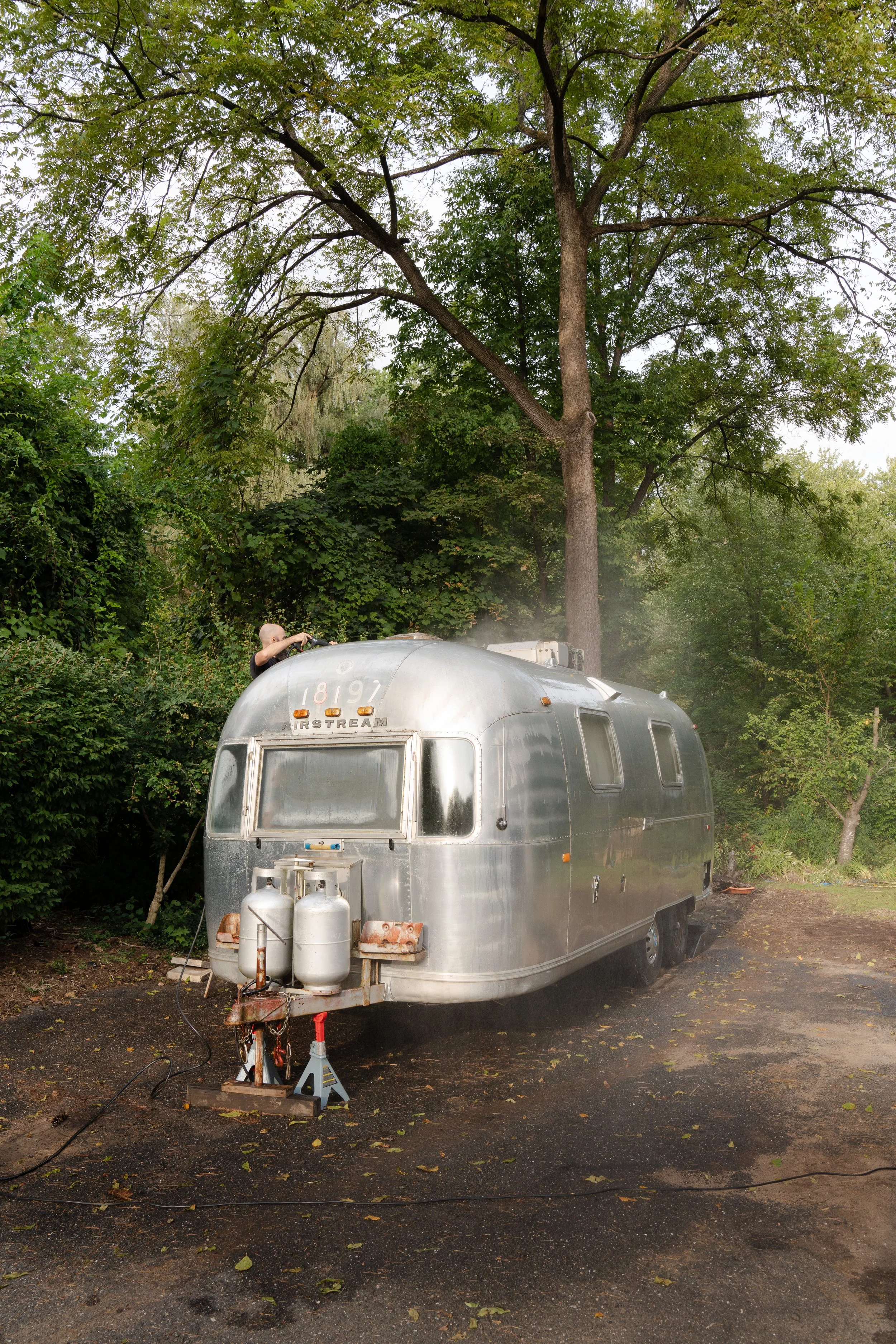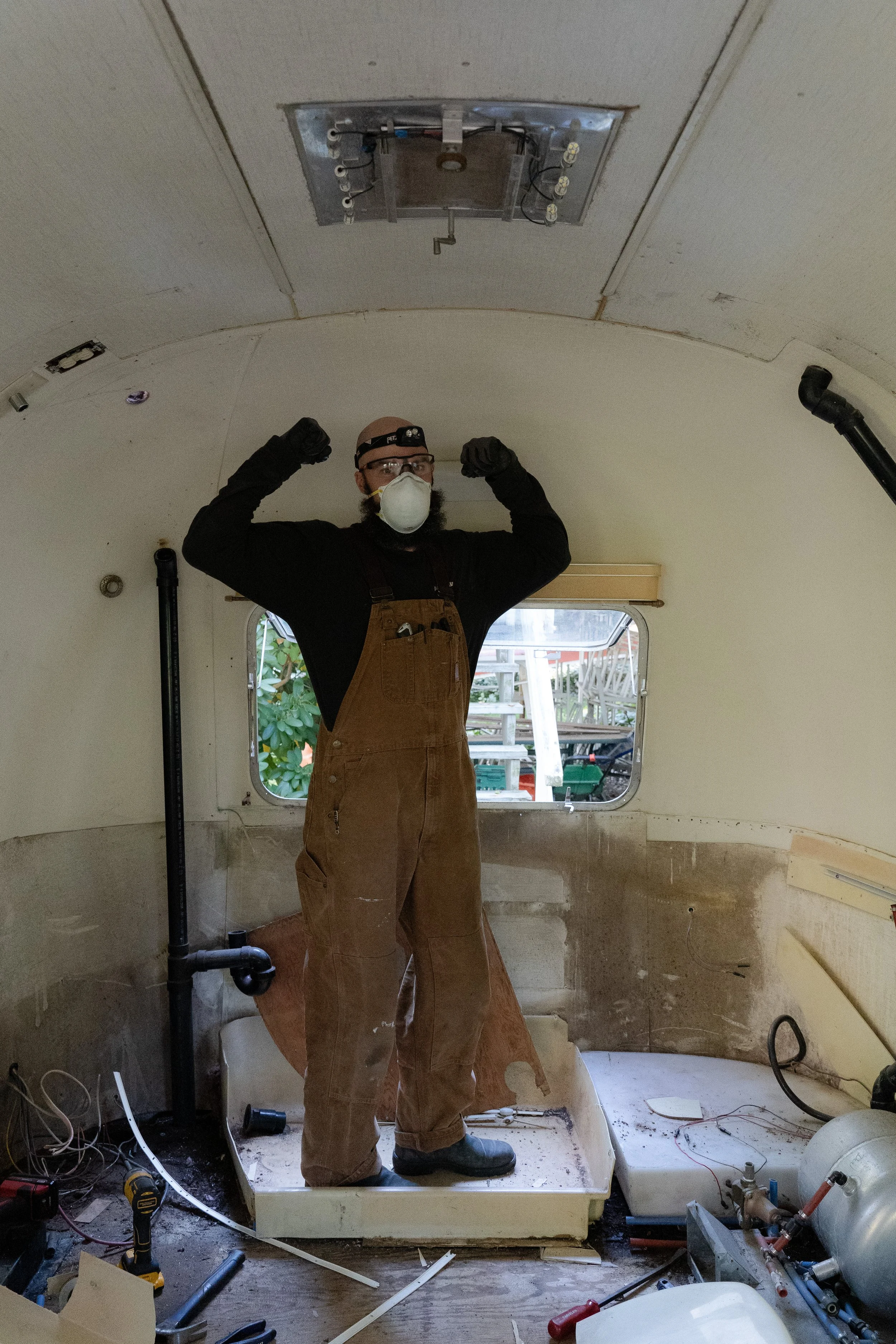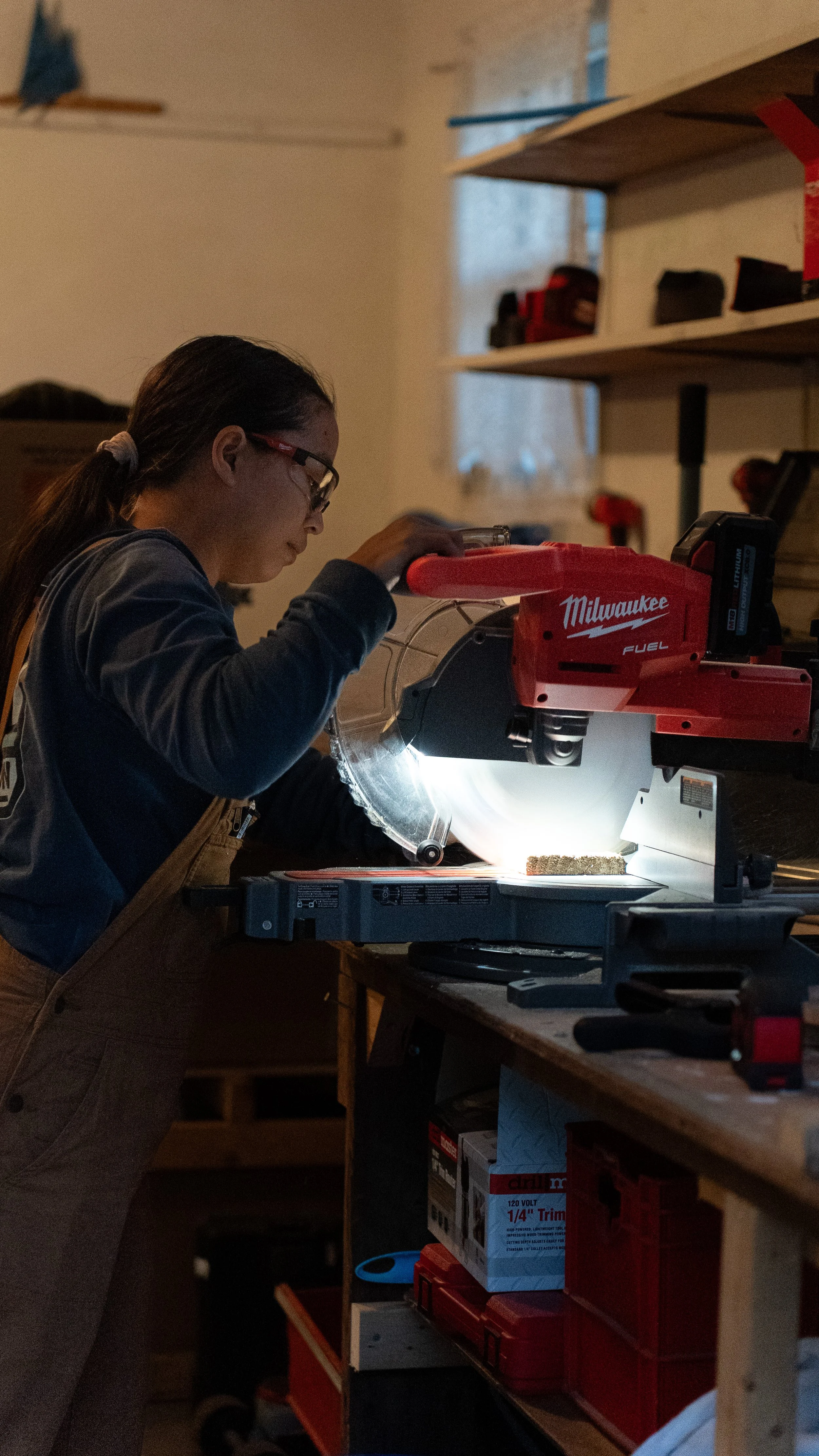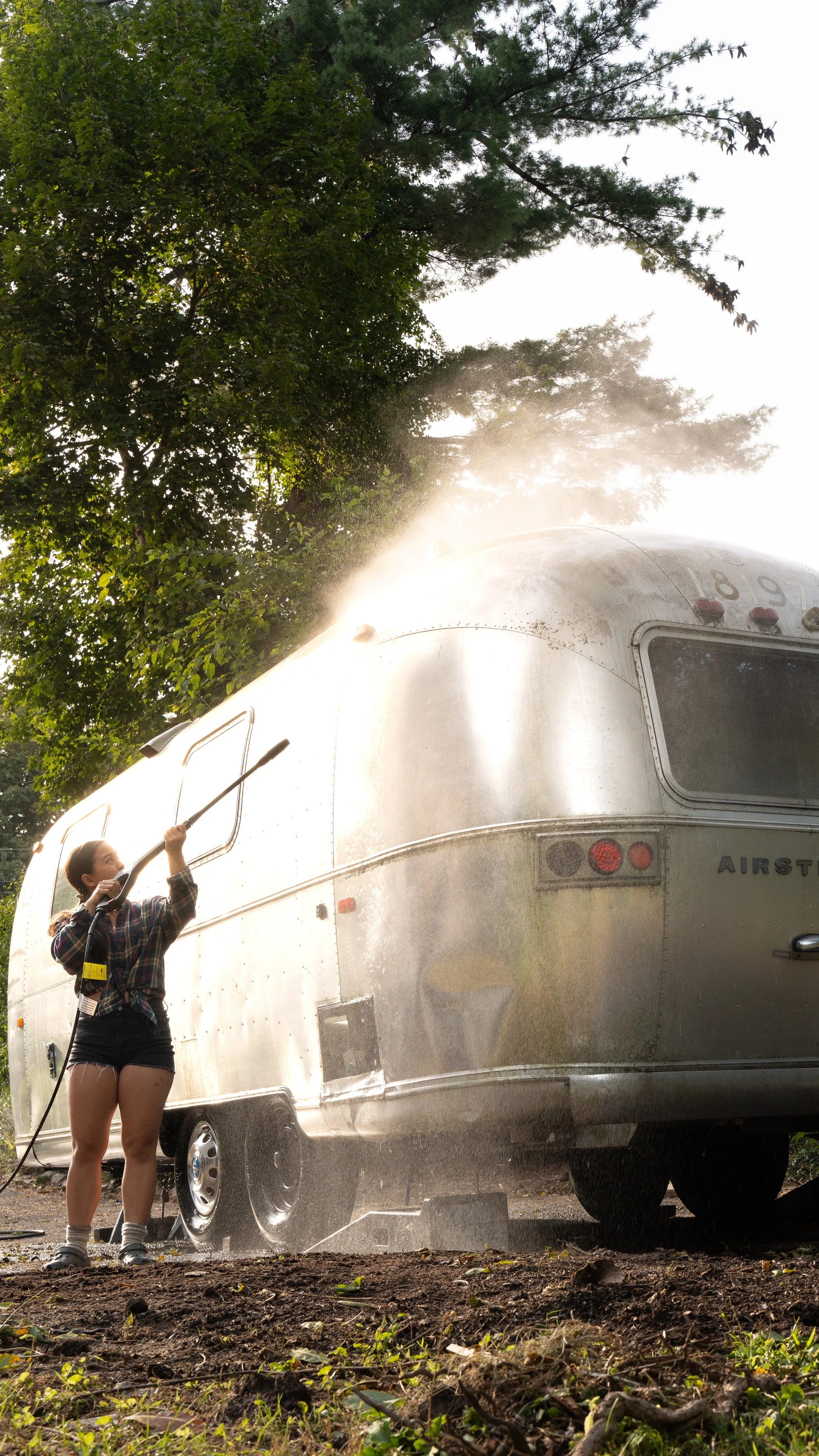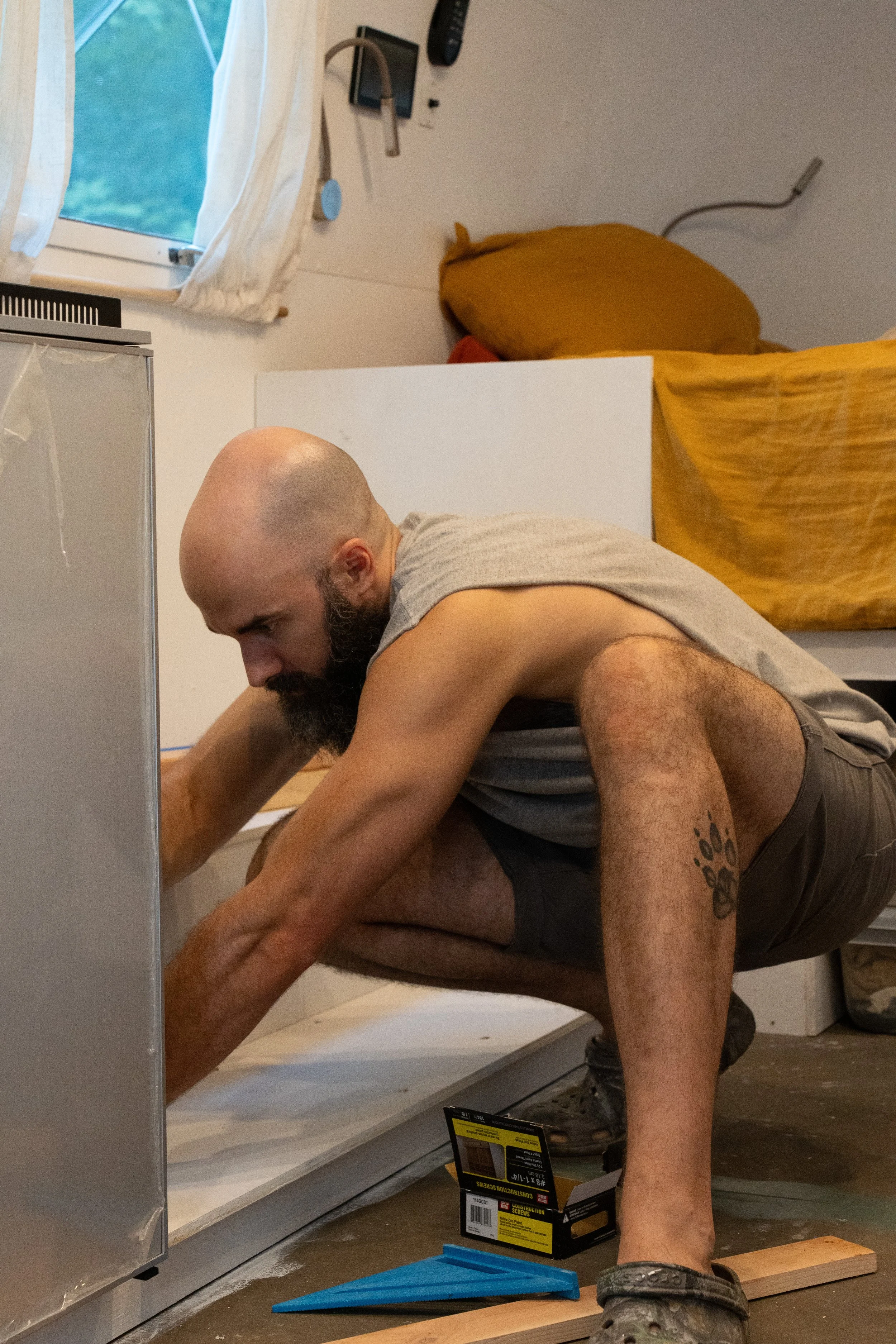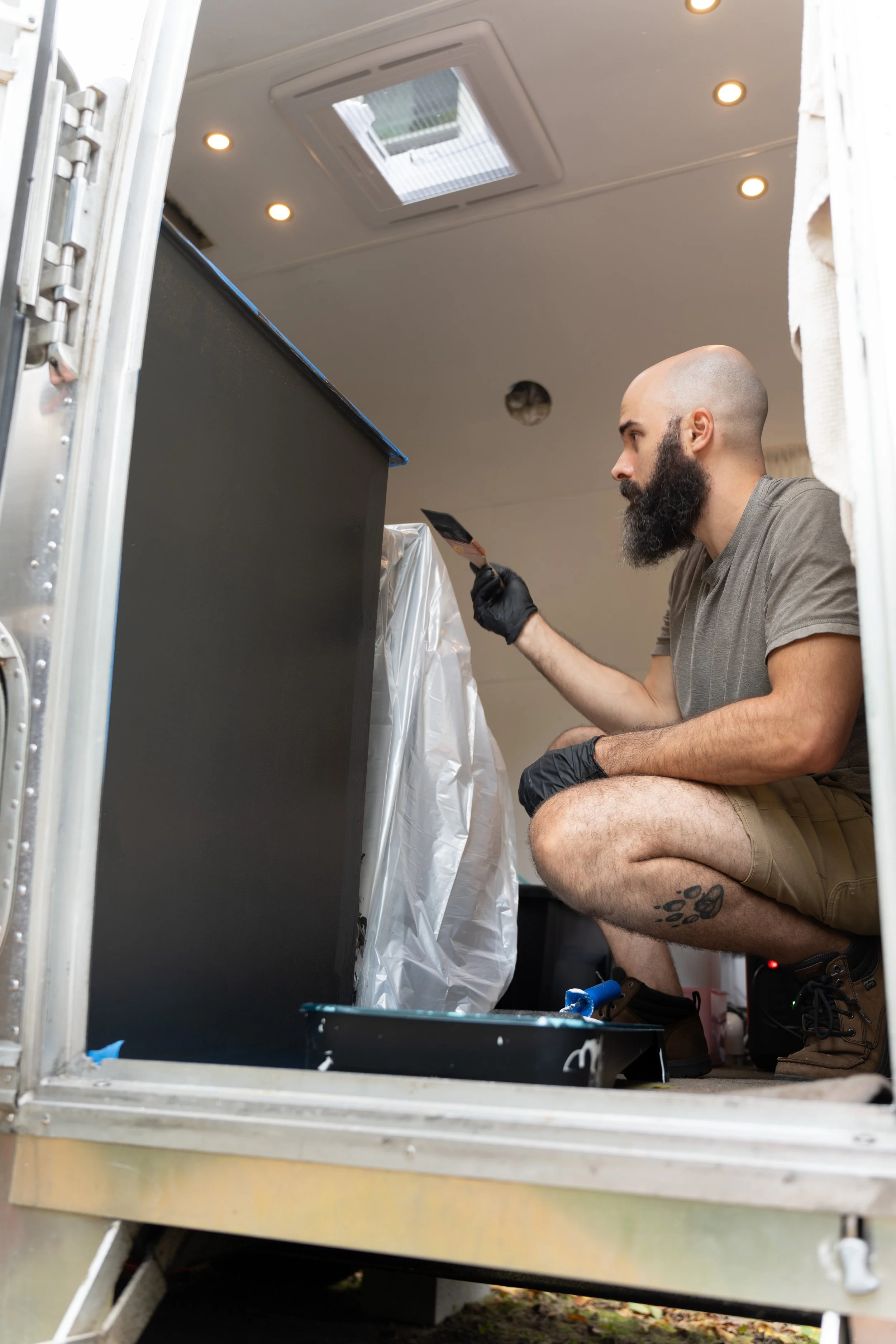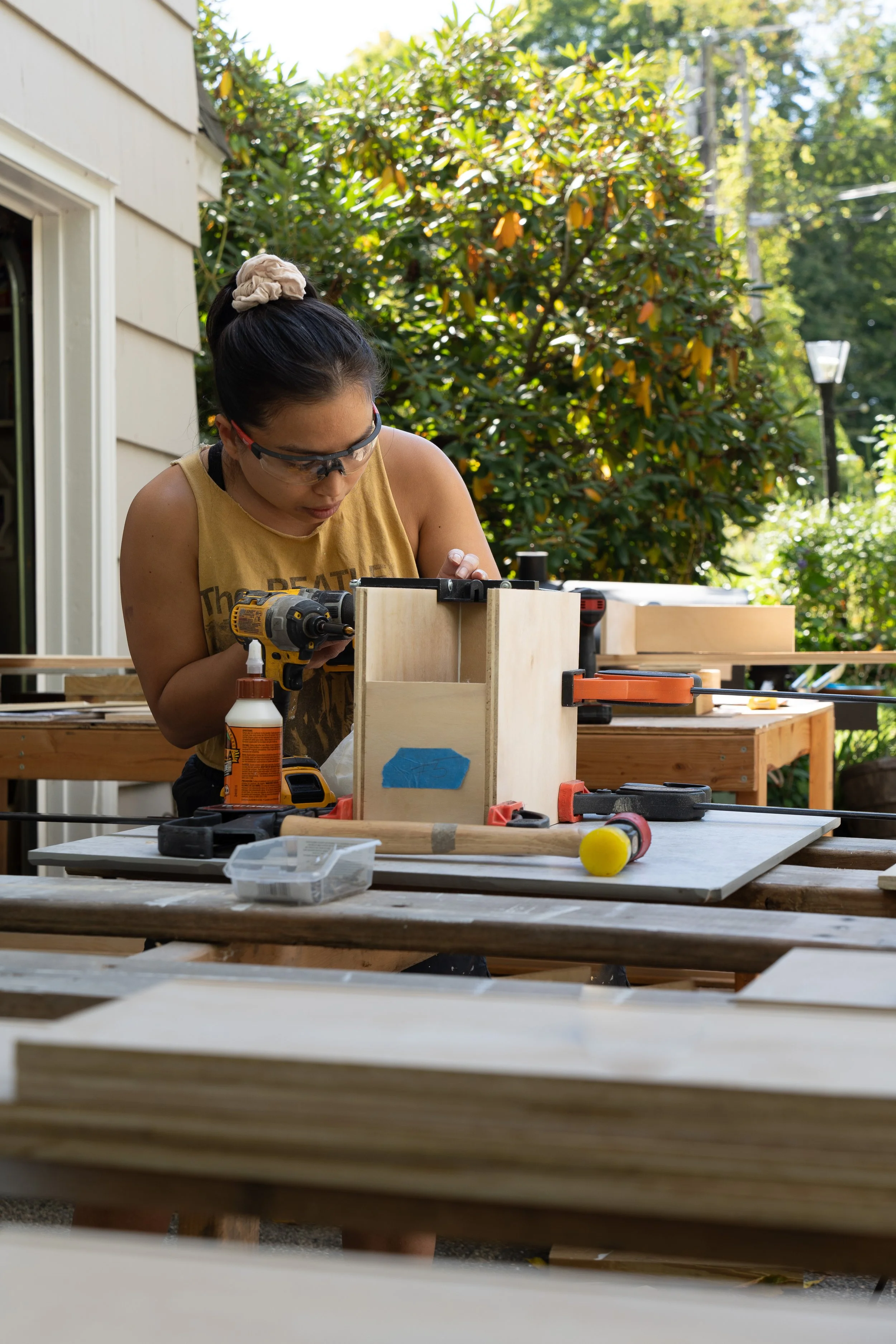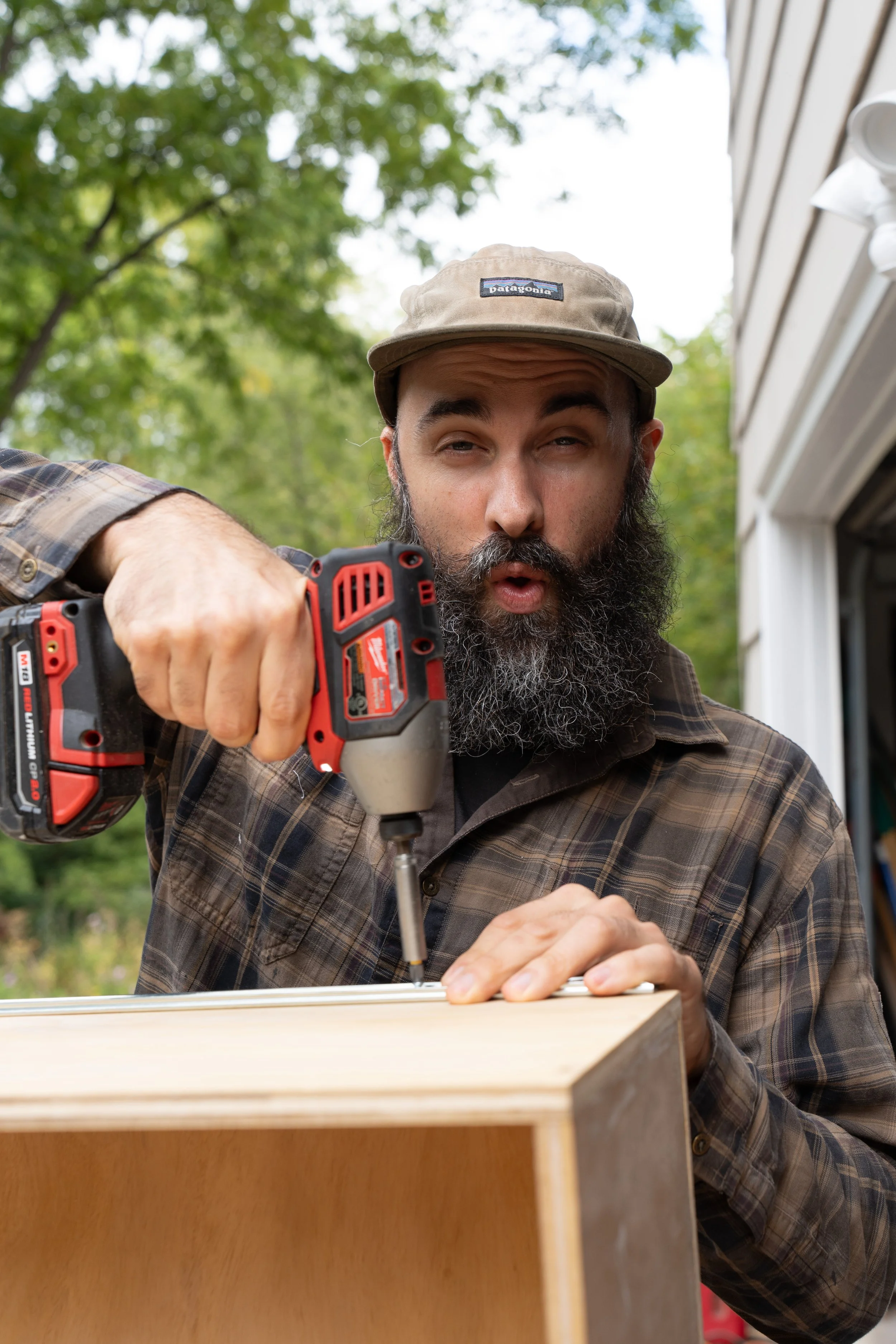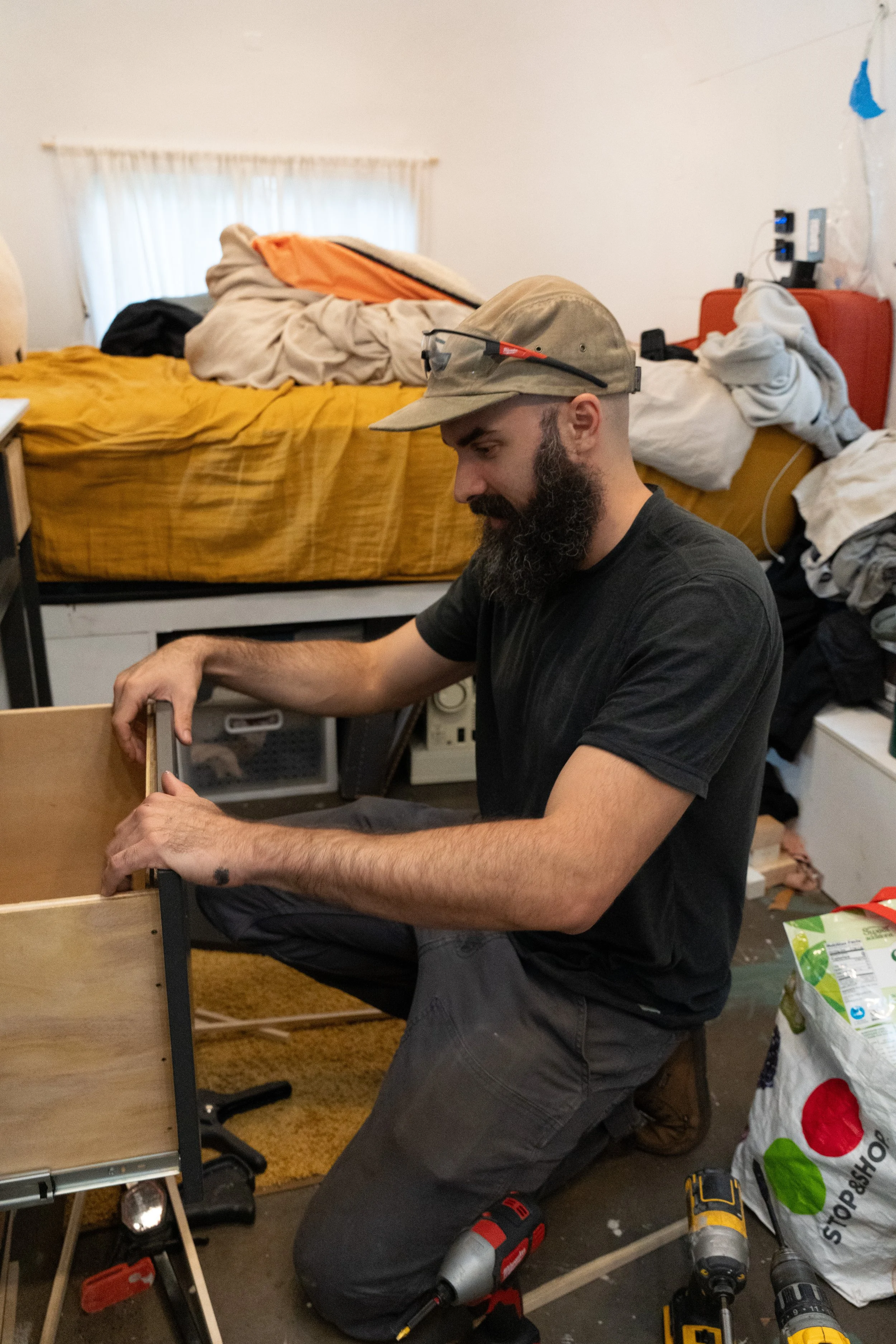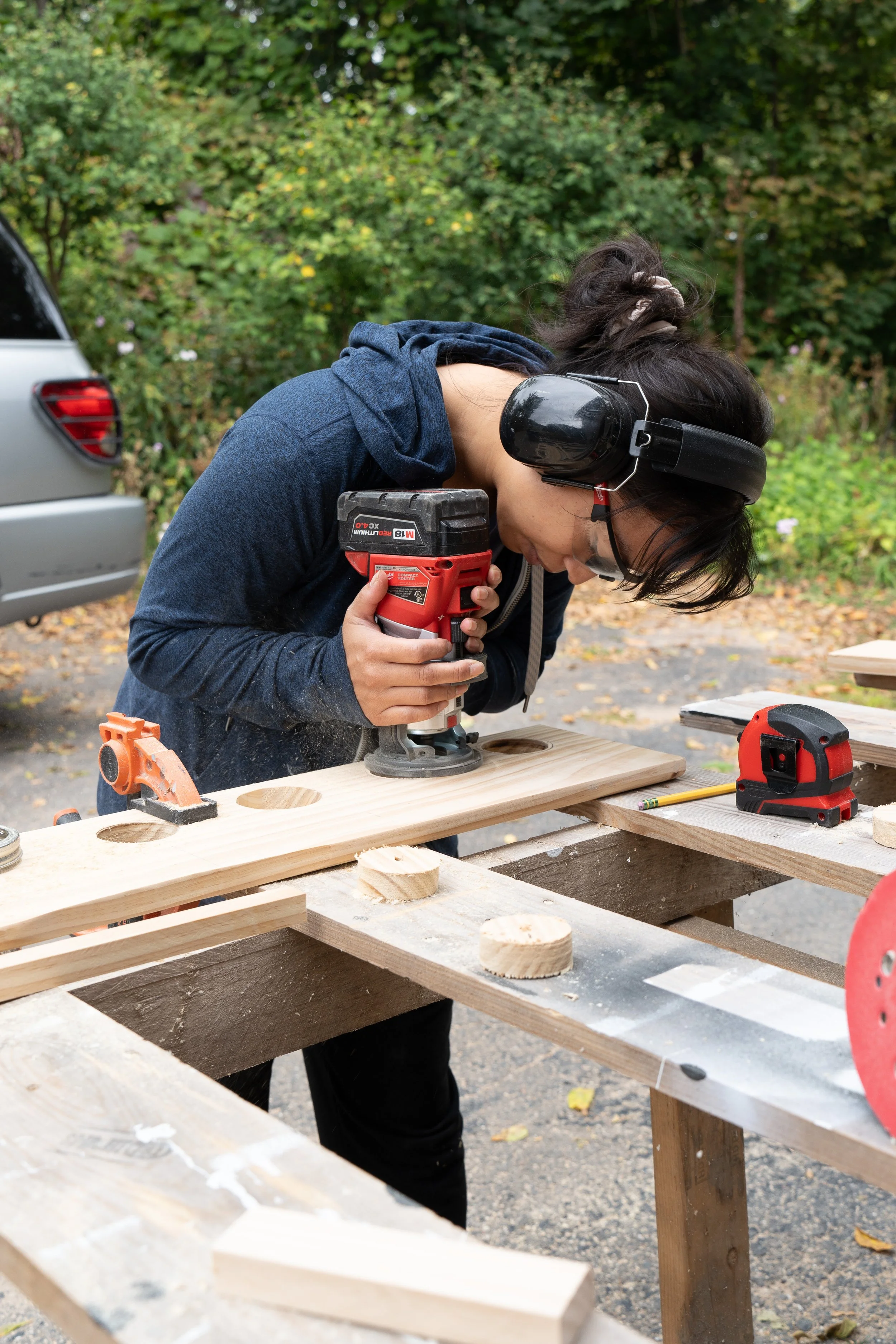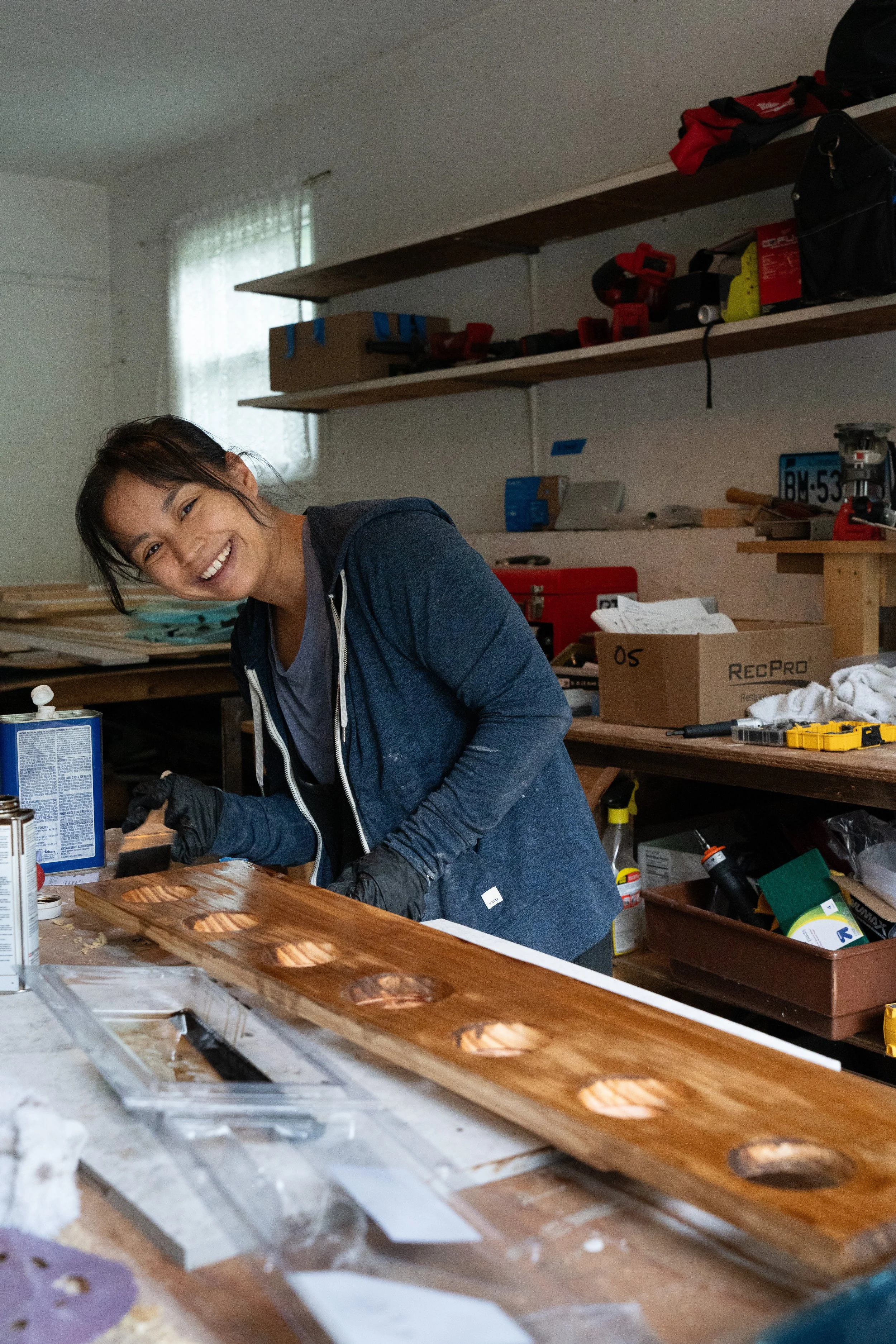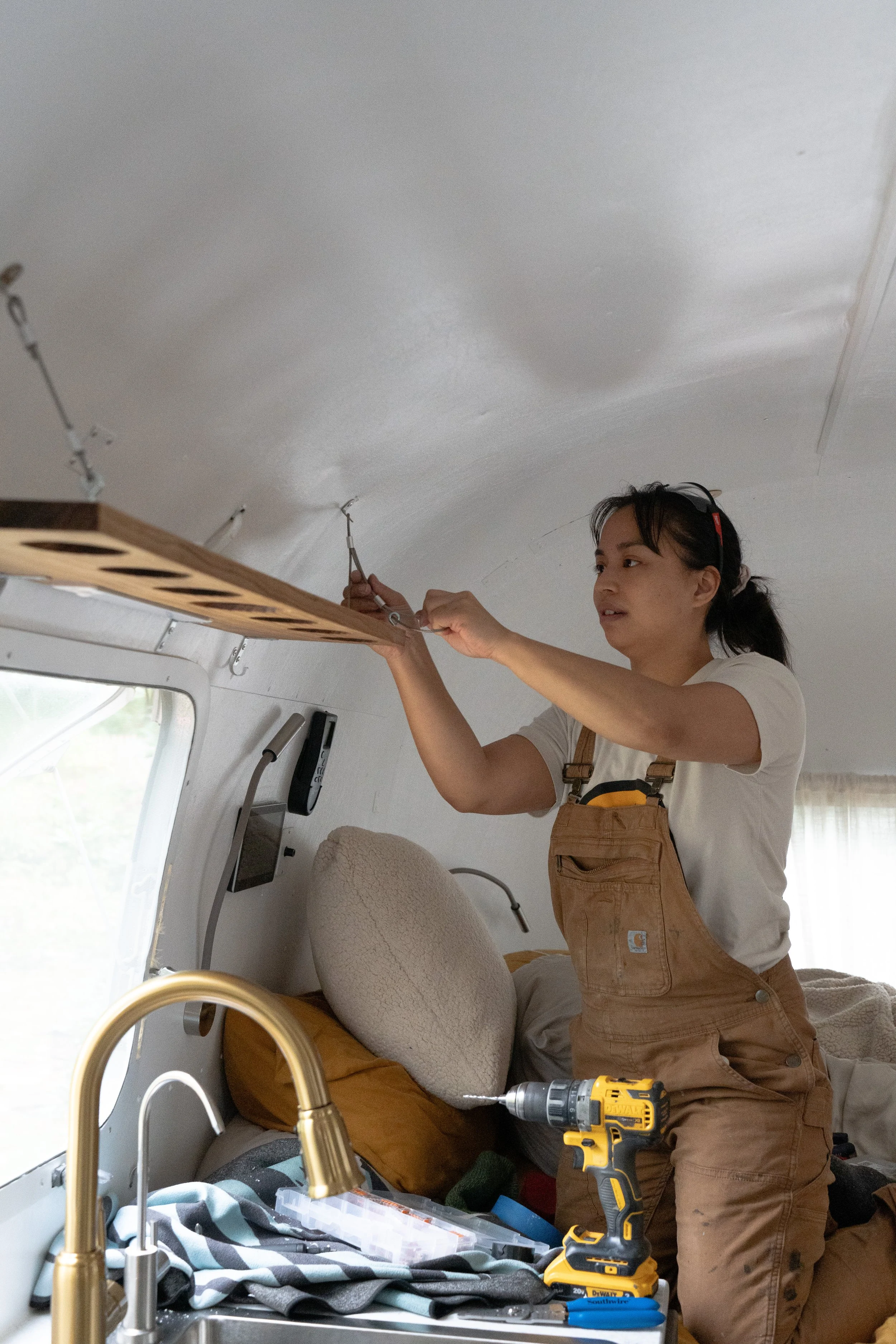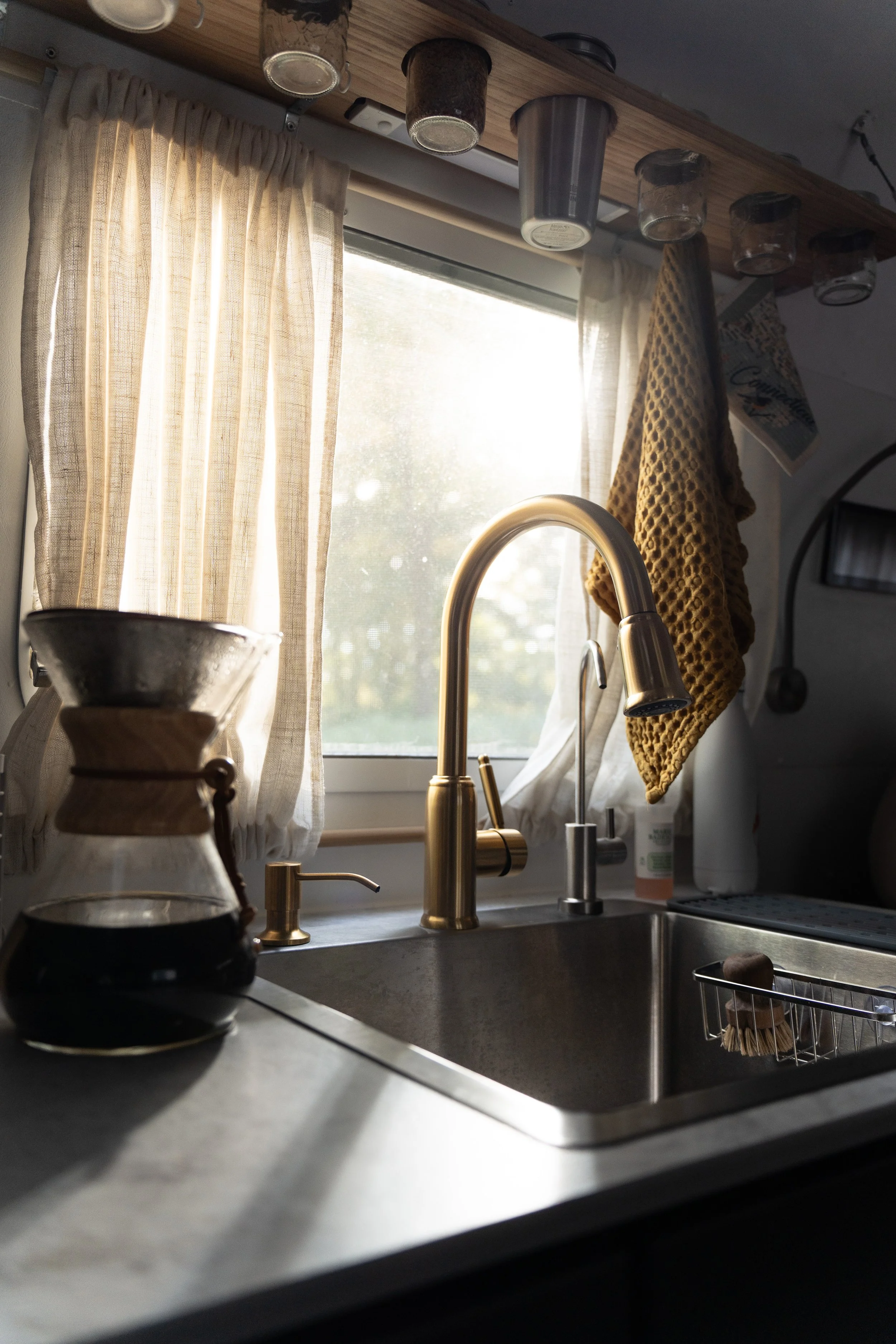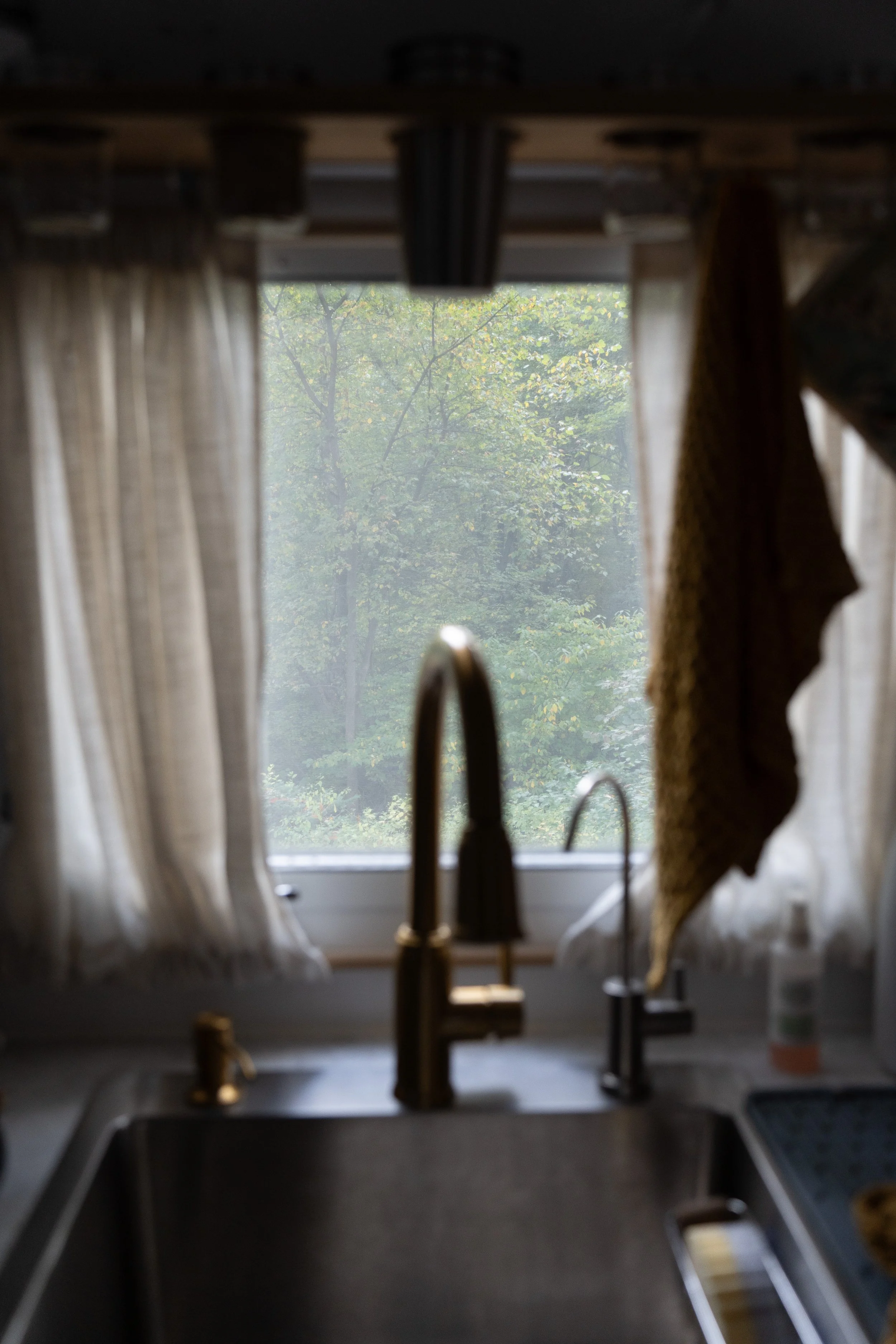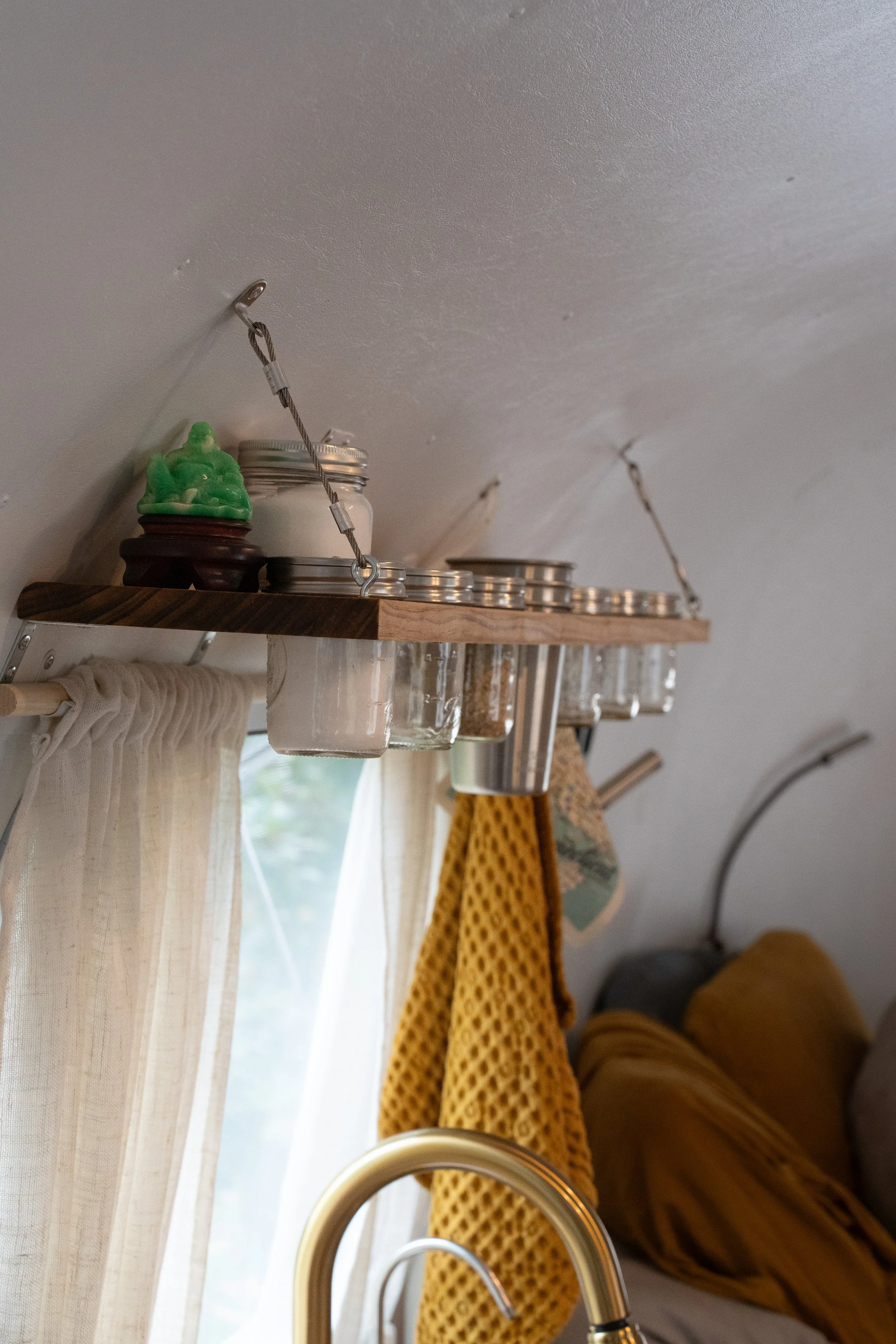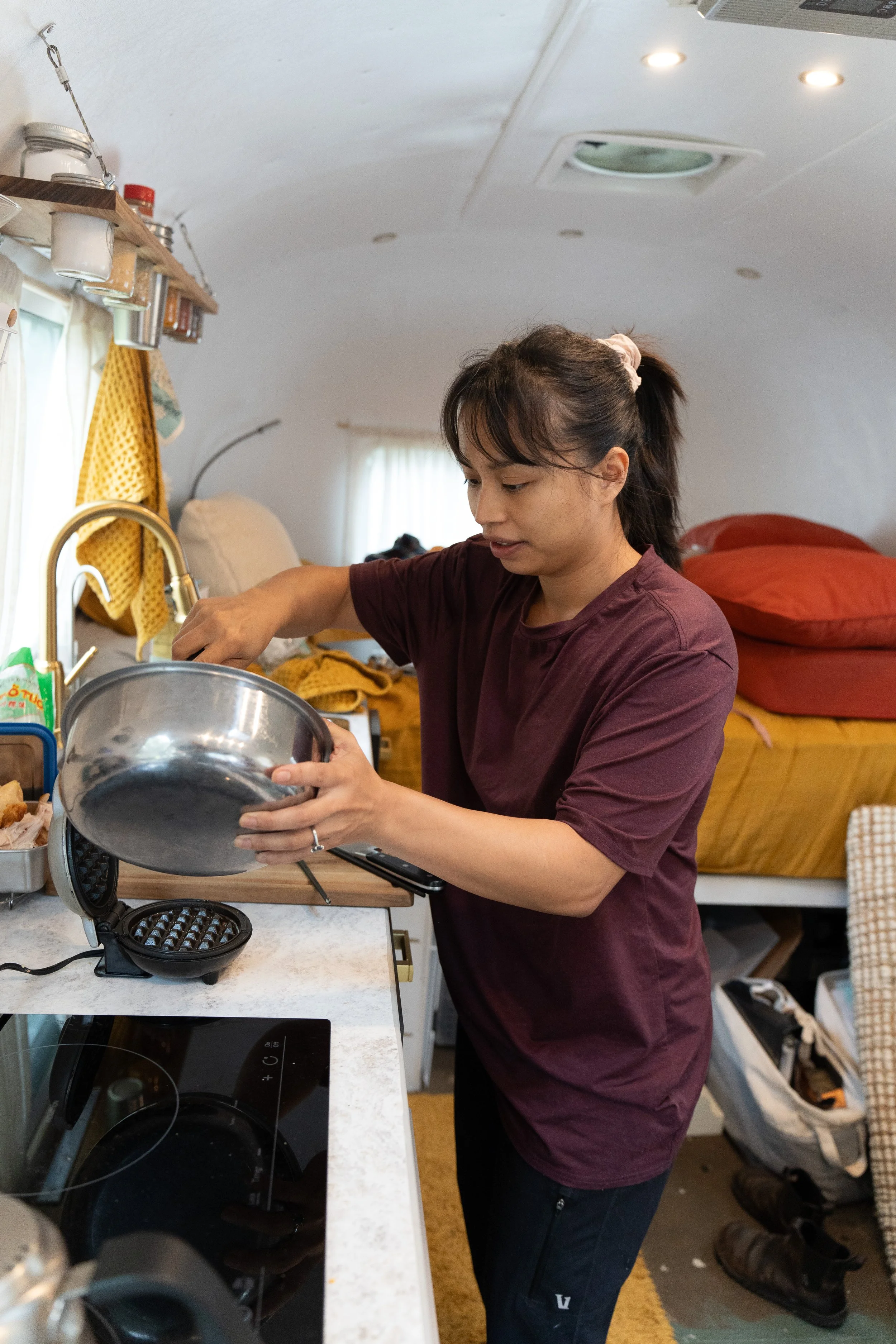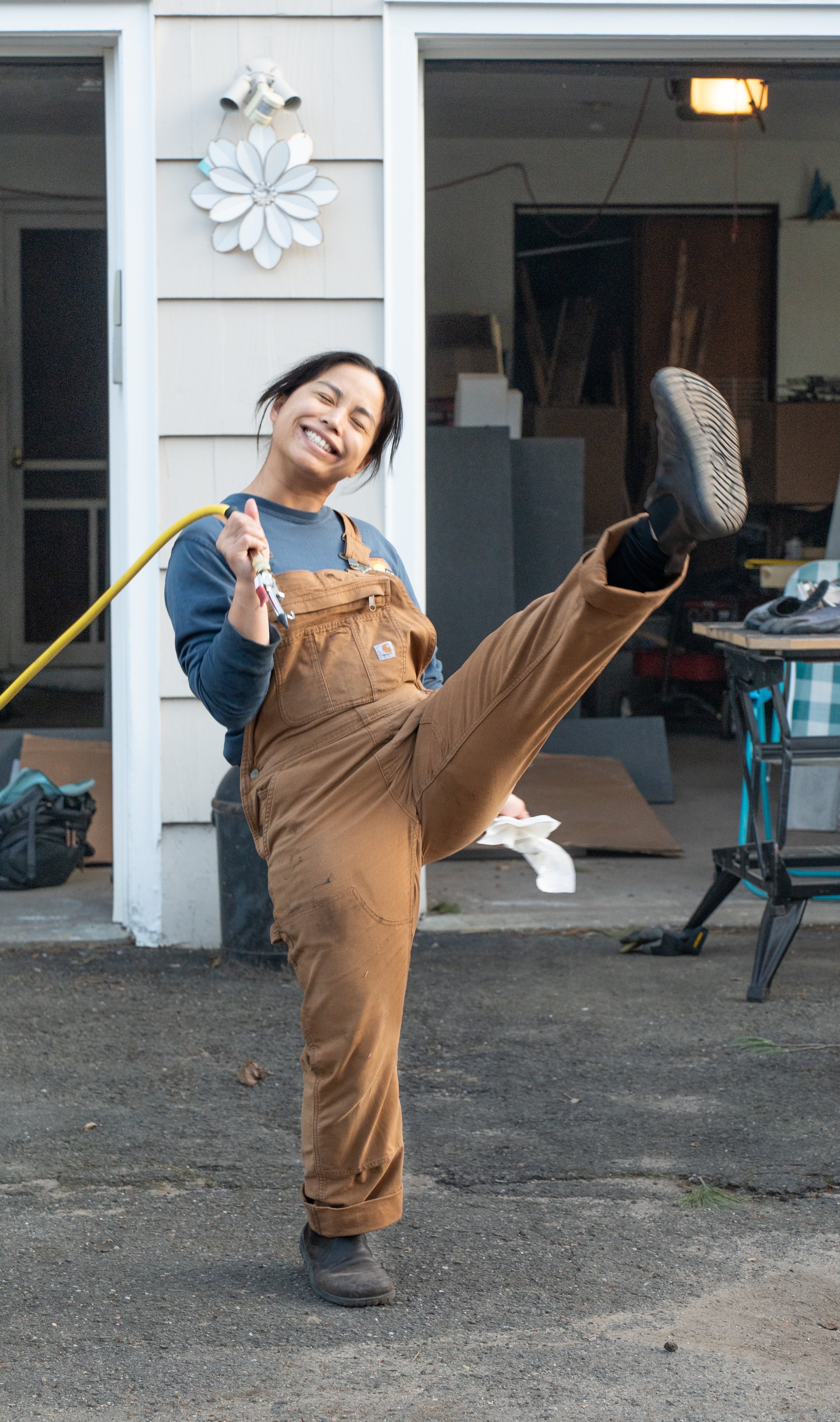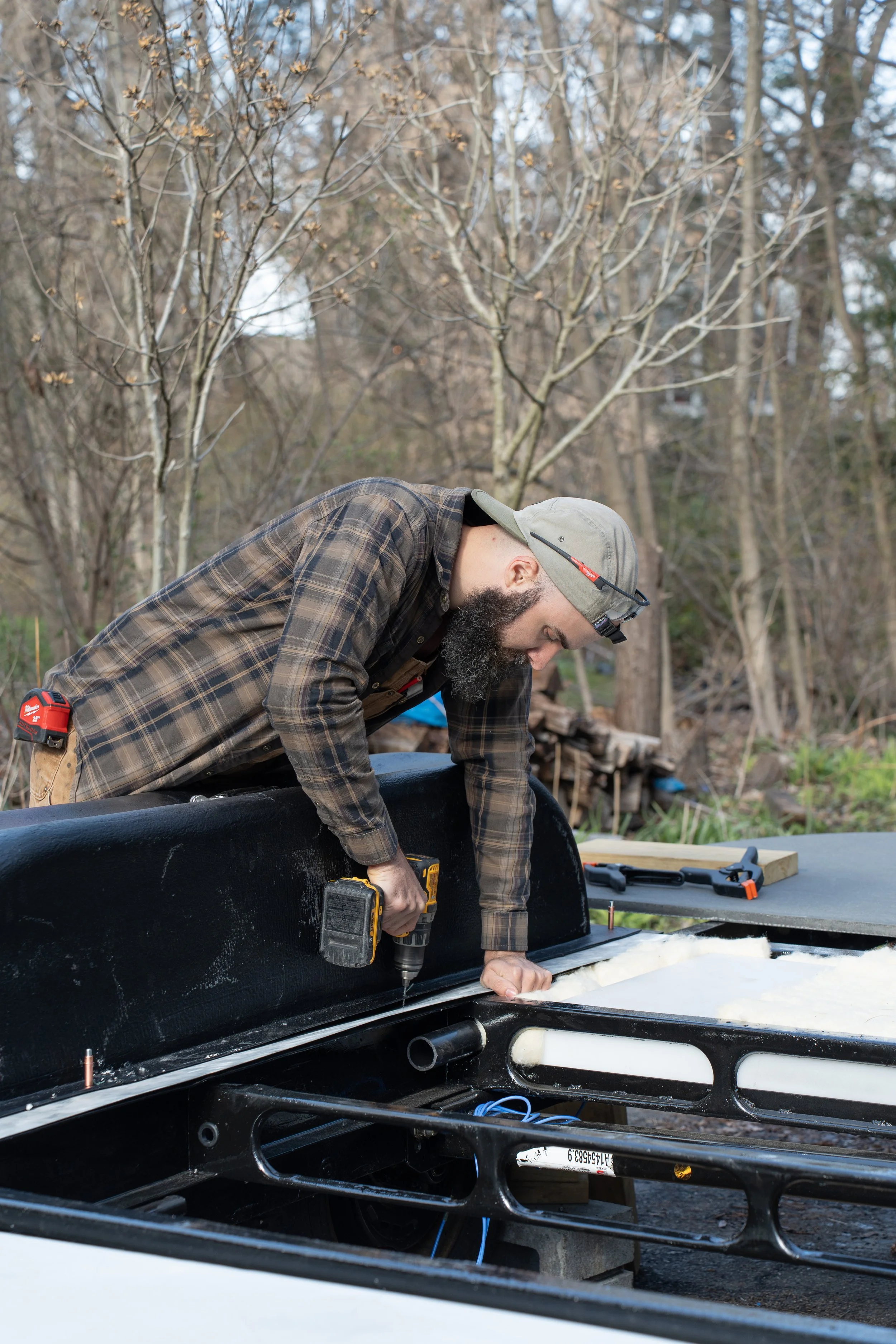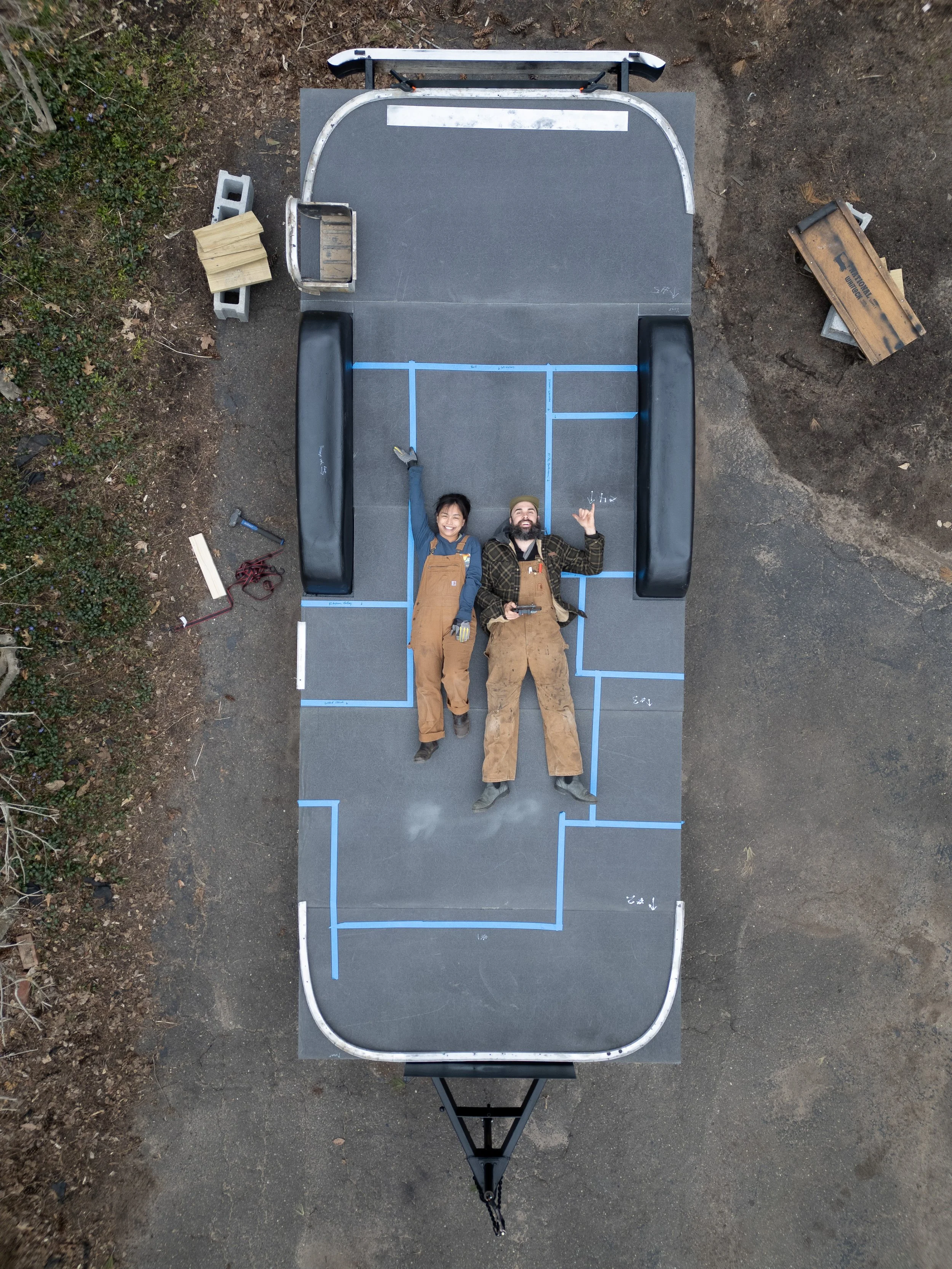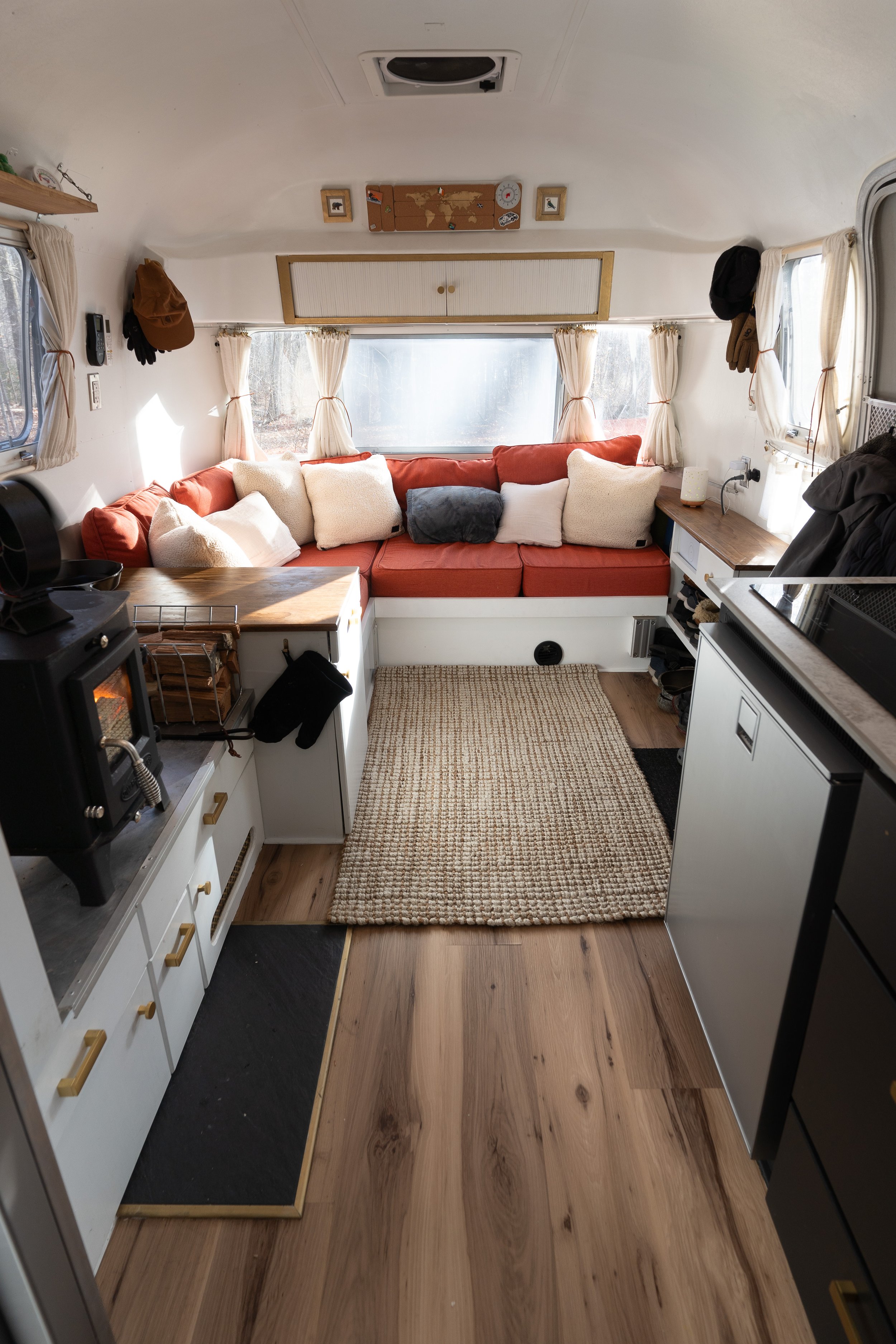It’s been a dream of ours to turn a vintage airstream into our home! So we made it happen!
PROJECT DETAILS:
Airstream Model: 1973 Land Yacht Safari, 23ft. (19ft. Interior Space)
Purchase Price: $9,000 USD
Project Start Date: October 2023
Project End Date: December 2024
And we restored it all ourselves!
The Original 1973 Airstream
1973 Land Yacht Safari Airstream
Our Vintage Airstream is a dual axle 1973 Land Yacht Safari. From tongue to bumper, it’s 23’ long with approximately 152 sq. ft. interior Space. We purchased our Airstream from a couple in Indiana, who decided to sell it after originally planning to restore it themselves but never got around to it.
In August 2023, Matt took a flight to see it for himself, and made a deal. We bought our new (massive) project for $9,000 and put it on a towing bed to get it to Connecticut without problems.
We bought our Airstream with the original interior intact, which was a purposeful decision. Since we don’t have a lot of experience, we figured it’s best to see how it comes apart before putting it back together. This ended up being a GREAT decision because we were able to use the old furniture as reference and it was a breeze reattaching our restored components.
Replaced
Original Rotten Plywood Subfloor w/ 3/4” Coosa Bluewater 26 (will never rot)
Original Electrical System w/ a Custom Solar Powered System with 800ah Battery + 3000w Invertor
Full Bathroom w/ Wet Bath
Blackwater Toilet with Composting Toilet
Original AC w/ Velit 12V AC
Original Fans and Vents w/ Maxxair Fans & Maxxair Skylight
Original Step w/ Torklift Airstream Step
All Trailer Lights & Wiring
Original Door Latch w/ Latchit Latch & Schwinn Deadbolt
Fiberglass Insulation w/ Havelock Wool for walls and Rockwool for floor
Propane Furnace w/ Diesel Heater & Tiny Wood Stove
Axles w/ New Dexter #10 Axles
Propane Fridge w/ 12 Volt Isotherm Cruise Elegance 135
Original Fresh Water Tank w/ Direct Replica from Vintage Trailer Supply
Added
800 Watts of Flexible Renogy Solar Panels
Complete off-grid electrical system
Greywater Tank (mounted under subfloor)
Separate 12V Chest Freezer
Starlink Internet
Dwarf 3k Tiny Wood Stove
All New Custom Furniture
Removed
Black Water System
All Propane Tanks, Lines & Appliances
All Original Furniture
Kitchen Galley Vent
Refrigerator Vent
Original Awning
Restored
Original Chassis (Frame)
Gravity Fill System
All Windows
Aluminum Shell
Original Aluminum Walls
Front End Cap (Plastic)
Back End Cap (Fiberglass)
Window Screens
Belly Pan Aluminum Pieces
Tambour doors for Front End Cap
Stabilizers
Nameplates & Letters
Watch the Original Tour
Check out our GROOVY Vintage Airstream from 1973! This is our Airstream Land Yacht Safari 23 ft in its original condition. We purposely looked for an airstream with the interior intact so we can see how it is put together and save us headaches in the future! Come take a tour!
Watch our BRAND NEW AIRSTREAM TOUR!
14 months of non-stop work. So much planning went into this project and it really pushed us to our limits and beyond. Check out the results of our hard work in a FULLY RESTORED VINTAGE AIRSTREAM TOUR!
